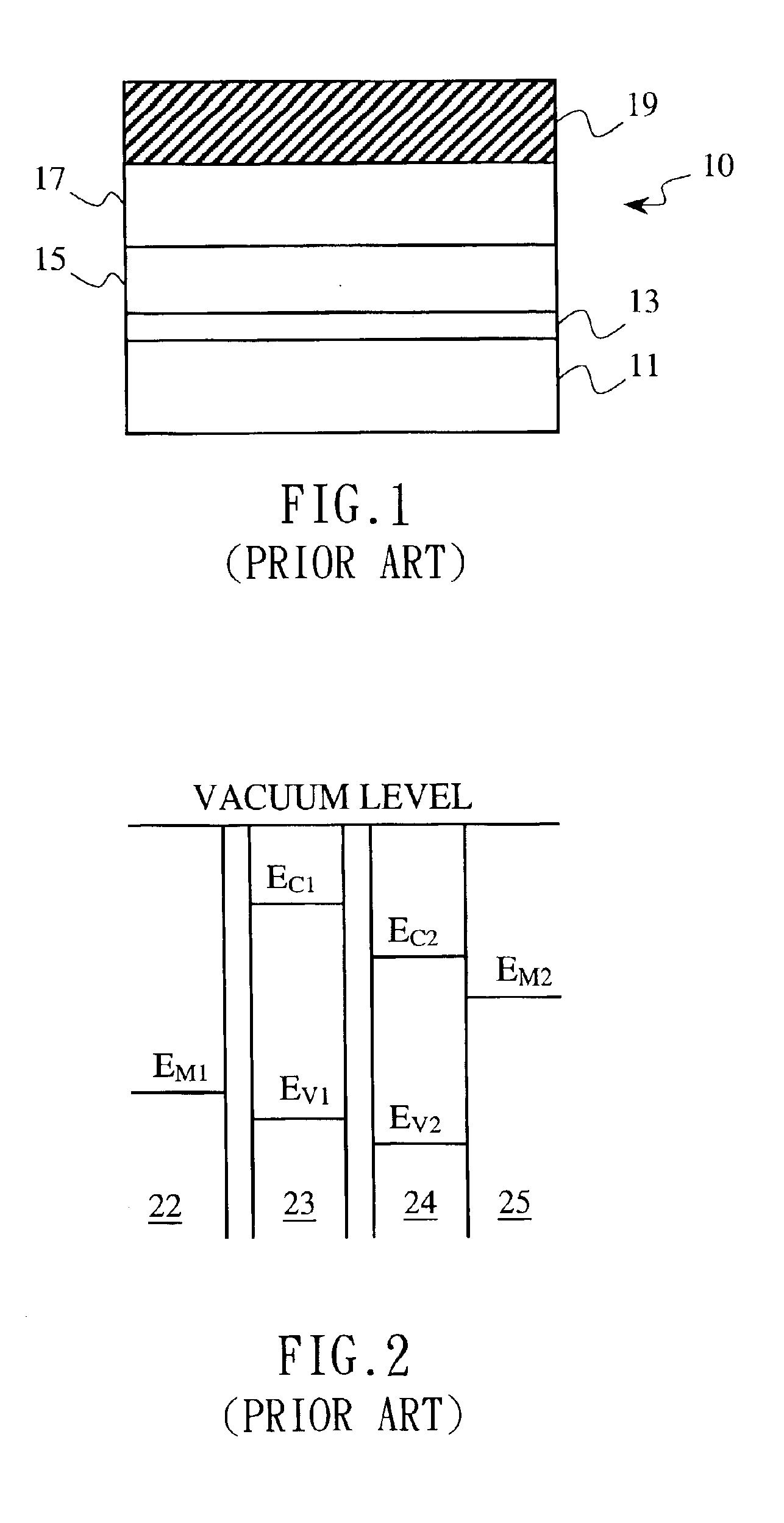Organic electroluminescent device having host material layer intermixed with luminescent material
a luminescent material and electroluminescent technology, applied in thermoelectric devices, discharge tubes luminescnet screens, natural mineral layered products, etc., can solve the problems of failure to achieve the objects of emitted white light or continuous full color light, structure employed can only cast monochromatic lights according to various chosen fluorescent materials,
- Summary
- Abstract
- Description
- Claims
- Application Information
AI Technical Summary
Benefits of technology
Problems solved by technology
Method used
Image
Examples
Embodiment Construction
ss="d_n">[0025]FIG. 1 is a cross-sectional view showing the structure of an organic EL device in accordance with the prior art;
[0026]FIG. 2 is a schematic band diagram showing the structure of another organic EL device in accordance with the prior art;
[0027]FIG. 3 is a cross-sectional view showing the structure of an organic EL device in accordance with one preferred embodiment of the present invention; and
[0028]FIG. 4 is a cross-sectional view showing the structure of an organic EL device in accordance with another preferred embodiment of the present invention.
DETAILED DESCRIPTION OF THE INVENTION
[0029]The present invention providing an organic light-emitting device and a method for manufacturing the same can be exemplified by the preferred embodiments as described hereinafter.
[0030]To start with, please refer to FIG. 3, which is a cross-sectional view showing the structure of an organic EL device in accordance with one preferred embodiment of the present invention. As shown in the...
PUM
| Property | Measurement | Unit |
|---|---|---|
| organic | aaaaa | aaaaa |
| bias voltage | aaaaa | aaaaa |
| luminescent | aaaaa | aaaaa |
Abstract
Description
Claims
Application Information
 Login to View More
Login to View More - R&D
- Intellectual Property
- Life Sciences
- Materials
- Tech Scout
- Unparalleled Data Quality
- Higher Quality Content
- 60% Fewer Hallucinations
Browse by: Latest US Patents, China's latest patents, Technical Efficacy Thesaurus, Application Domain, Technology Topic, Popular Technical Reports.
© 2025 PatSnap. All rights reserved.Legal|Privacy policy|Modern Slavery Act Transparency Statement|Sitemap|About US| Contact US: help@patsnap.com



